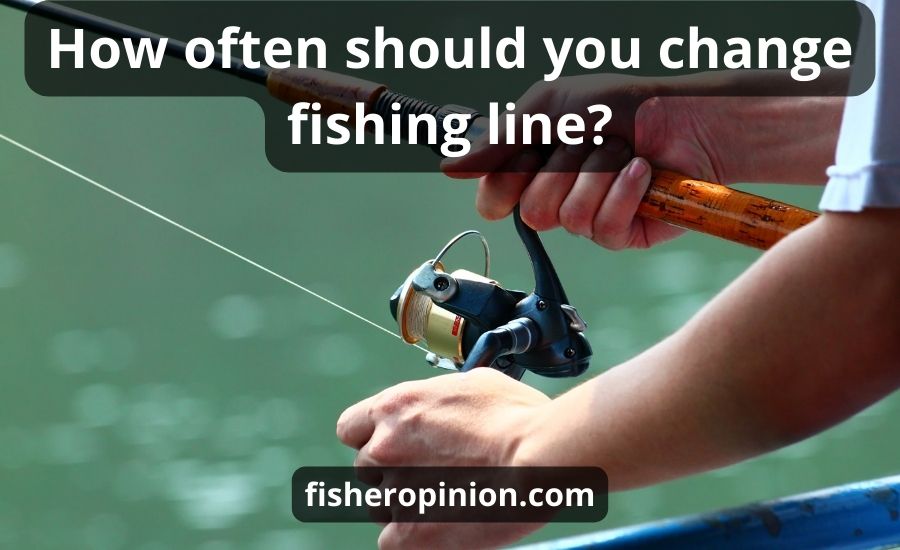How often should you change fishing line? A good and pleasurable fishing experience depends on having a well-maintained fishing line. Anglers frequently ask themselves, “How often should you change your fishing line?” The type of line, how often it is used, the fishing conditions, and the quality of the line are some of the variables that affect the answer.
Your ability to fish can be greatly enhanced by knowing when to replace your line and how important it is to maintain it.
In this guide, we’ll examine the factors and recommendations for figuring out how frequently to change your fishing line, giving you the information you need to make wise choices and increase your chances of reeling in that elusive catch. I hope this guide will be informative and interesting for you to read.
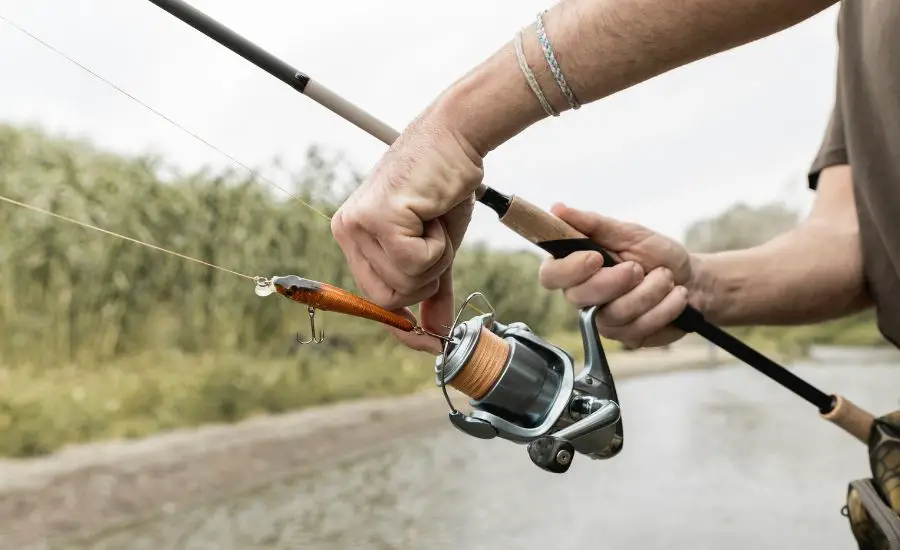
How often should you change your fishing line?
The type of line, how often it is used, the style of fishing, and how well it is maintained are all variables that might affect a fishing line’s durability and lifespan and how often should you change it.
Here are some general recommendations for various fishing line types:
Monofilament fishing line
Clear monofilament lines are frequently used and have a reasonable lifespan. A monofilament fishing line can last anywhere from a few months to a few years with frequent use and good maintenance, if you are a frequent user it’s advised to change them three times in one year. However, long-time, exposure to water, sunshine, and repeated stress may cause the monofilament line to weaken.
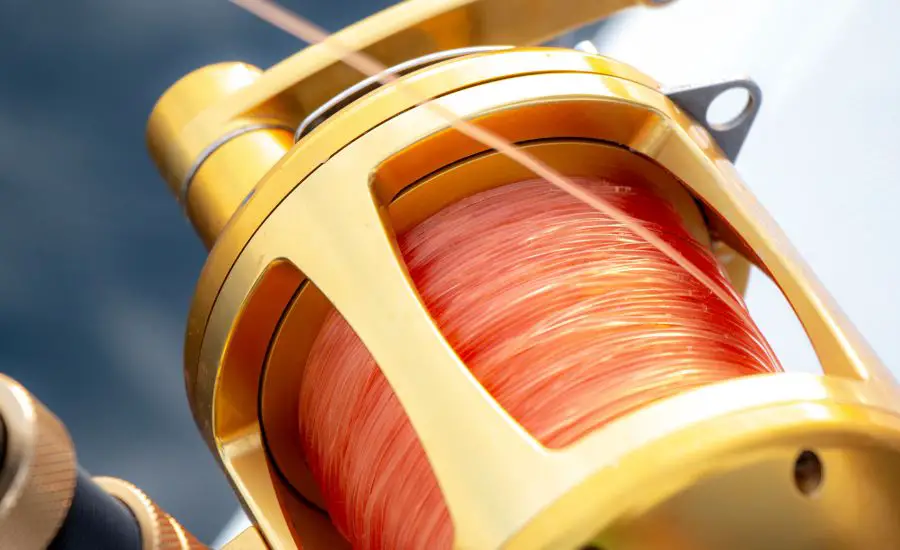
Fluorocarbon line
Fluorocarbon lines are renowned for their exceptional abrasion resistance and low visibility. Their resistance to water absorption and UV radiation makes them often more durable than monofilament lines. Fluorocarbon lines can survive a year or longer if properly cared for, but it’s still advised to inspect and replace them if there are any visible signs of wear or damage.
Braided line
Known for their remarkable fishing line’s strength and longevity, braided lines are constructed from woven strands of synthetic materials. When compared to monofilament and fluorocarbon lines, braided lines are more durable. Braided lines can survive several years, depending on usage and line quality.
However, it’s crucial to routinely inspect for any damage or line breaks that could weaken the strength of the braided line, such as fraying or abrasions.
Compared to the aforementioned lines, the braided line has more strength and weight since it is composed of synthetic fiber strands that have been weaved together.
Here is how often should you change your braided line:
- A heavy fisherman may change the braided line once or twice a year
- Fishing enthusiasts can adjust their braided line once a year
- Weekenders can change their braided line once a year
After ten years if your fishing line remains unused you should discard your braided line.

Maintaining tips for different types of lines
The following advice can be used to preserve and take care of various kinds of fishing line:
Monofilament ones
Prevent prolonged exposure to direct sunlight. Over time, they can become weakened by UV light.
After every fishing excursion, rinse the line with fresh water to get rid of any debris, sand, or salt.
They should be kept out of direct sunlight and in a cool, dry location with minimal temperature swings.
Since they deteriorate more quickly than other types of lines, it is recommended to replace them at least once a fishing season or year.
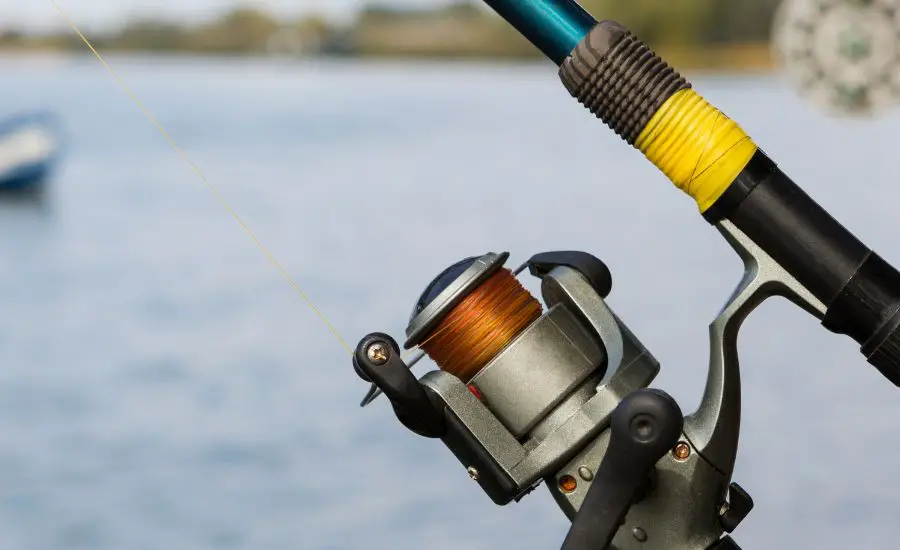
Fluorocarbon
Although they are more resilient to water absorption and UV radiation, they still need to be properly maintained.
After fishing, especially if you are in saltwater, rinse the line with fresh water.
Look for any indications of damage, including scratches or dents, and replace the line if required.
They should be kept out of direct sunlight and in a cold, dry environment.

Braided
Regularly check them for damage, fraying, or wear. Keep an eye out for any weak points or places where the fibers might have come loose.
After fishing, especially in saltwater or in muddy or unclean circumstances, rinse them with fresh water.
Steer clear of rough or sharp surfaces or anything that could cause the line to tear or weaken.
To keep them supple and performing well, use a line conditioner or dressing made especially for them.
Make sure they are dry while storing them to avoid mildew or mold formation.
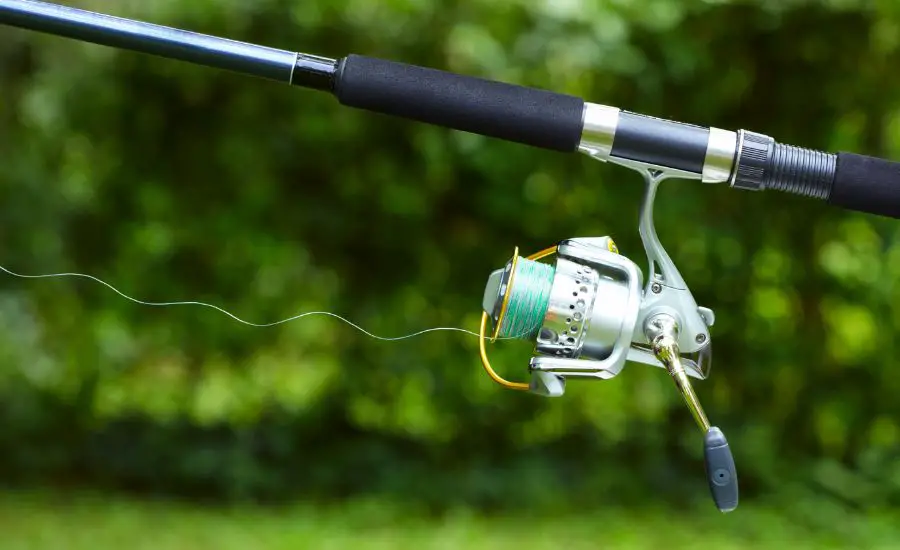
FAQ
How long does a fishing line last?
It is advised to replace your fishing line at least once a year or during a fishing season. It is true that mildew fishing lines, particularly monofilament lines, deteriorate more quickly when exposed to water, sunshine, and the stress of fishing. In addition, fluorocarbon and braided lines last longer than monofilament lines.
Although braided lines and fluorocarbon lines have a longer lifespan, it’s still vital to periodically check them for wear, fraying, or damage and change braided lines as necessary. The best time to replace a line should also take into account other elements like fishing circumstances, frequency of fishing, and line performance.
How often do I need to change fishing line?
Even if your fishing line seems to be in good shape, it is generally advised to change your line once a year or at least once per fishing season. This is particularly true for monofilament lines, which can deteriorate with time from exposure to water, sunlight, and fishing stress.
It is crucial to remember that several variables might affect how often fishing lines are changed, including the kind of line, how often it is used, the fishing environment, and the general state of the line. Your line may wear down and require replacement more frequently if you fish regularly or in difficult conditions with rocky patches or underwater structures.
It’s important to regularly check your fishing line for wear, fraying, or damage. It’s best to change monofilament lines with a fresh line if you see any noticeable damage, such as nicks, abrasions, or weakening, to prevent line failures when fishing.
How do I know if my fishing line is still good?
You may visually and tactilely evaluate your fishing line to see if it’s still in good shape. The following are important signs to watch out for:
Visual examination
Examine the whole length of the monofilament line as an example of any obvious evidence of deterioration, wear, or fraying. Inspect for any abrasions, cuts, or nicks that might erode the line.
Look for any yellowing on the monofilament line, since this could be a sign of UV deterioration.
Check the line for any twists or kinks, as they might influence the strength of the knot and casting.
Observe the constancy of the line’s diameter. Deterioration could be indicated by thinning or irregularities.
Tactile examination
Feel for any unevenness, snags, or rough places by running your fingers along the line. There may be elevated spots or a harsh sensation in damaged areas.
To feel for any weak or brittle parts or soft spots, gently squeeze the line between your fingertips.
Use your hands to stretch a little portion of the monofilament line if you’re using one. It can be necessary to replace it if it becomes overly fragile or starts to crack before reaching the breaking point.
Additionally, take into account the fishing rod past: What is the duration of your use of it? Have you recently caught fish that fought hard or fished in difficult conditions? These elements may increase the need for more frequent replacements by causing line wear.
It’s crucial to keep in mind that even if your line seems to be in fine shape, you should still change it at least once per fishing trip season or year because monofilament lines, in particular, are susceptible to deterioration over time due to environmental variables and stress.
You can guarantee optimum performance, lower the chance of line failures, and enhance your overall fishing experience by routinely checking and changing your fishing line.
Does fishing line lose its strength?
Yes, the weakening of a fishing line depends on the following variables:
UV exposure: a fishing line can deteriorate after prolonged exposure to sunshine. UV radiation has the potential to degrade the line’s molecular structure, which would increase its brittleness and decrease its strength.
Water and moisture: frequent contact with water, particularly salt water, can weaken a fishing line. Certain types of lines, including monofilament, can become weaker due to water absorption, which can result in a reduction in knot strength and overall line integrity.
Wear and tear: while in use, a fishing line endures wear and tear. Stress on the line thickness from casting, retrieving, and battling fish can result in tiny nicks, abrasions, or straining. These elements have the potential to degrade the line and lessen its overall strength over time.
Age and storage conditions: fishing line can age and become less effective over time, even when it is not being used. Abrupt changes in temperature, humidity, and storage conditions can hasten the weakening and deterioration of the line.
It’s crucial to remember that the degree of resistance that various fishing line types have to these elements varies. For instance, compared to monofilament lines, a fluorocarbon line often offers superior resilience to UV rays and water absorption.
How to make fishing lines last longer?
Here are some fishing tips to make your fishing lines last longer:
Appropriate storage: keep your colored fishing lines somewhere dry and cool. Line damage can be accelerated by exposure to high humidity, high temperatures, and direct sunshine. To shield the lines from UV rays and other environmental elements, think about using line spoolers or storage cases.
Rinse after saltwater your favorite fishing lines: it’s important to rinse your fishing line with fresh water after every usage if you fish in saltwater. Rinsing the flexible and stretchy lines thoroughly will help prolong their longevity by removing any salt residue that may corrode and weaken it so they last more than the rigid fishing lines.
Avoid abrasive surfaces: steer clear of fishing near rocks, jagged edges, or other abrasive fixed and solid object surfaces that could sever your line. Be cautious when navigating your line to prevent needless contact with rough surfaces that could cause it to fray or weaken.
How to replace a fishing line?
There are a few simple steps involved in replacing a fishing line. Here is a basic how-to:
First, acquire the required instruments and supplies:
• Select the right type, pound test, and length of fishing line based on your needs.
• Line cutters or scissors: to trim both the new and the old lines.
• A preferred knot, or arbor knot, is used to fasten it to the reel spool.
Second, remove the preceding line:
• If there is still a line on the reel, use line cutters or scissors to cut it close to the spool.
• Recycle the old line if you can, or properly dispose of it.
Third, get the reel ready:
• Clear any dirt or debris from the reel spool.
• Make sure the reel drag is at the “off” or minimal setting.
Fourth, attach the fresh line onto the reel:
• Tie the new one to the reel spool with an arbor knot or your favorite knot. Verify that the knot is snug and stable.
Fifth, onto the reel, spool the new line:
• Maintain a grip on the fresh line spool such that the line comes off easily.
• As you begin to reel the line onto the spool, gently apply strain to it with your fingertips.
• To wind the new line onto the reel, slowly spin the reel handle. To avoid tangles or twists in the line, keep a slight tension on it.
• To avoid overfilling, leave some room at the edge of the reel spool before filling it to the required level.
Sixth, look for tangles or twists in the lines:
• Check the line carefully for any twists, loops, or tangles after it has been spooled onto the reel.
• If there are any problems, release the line’s tension and manually maneuver it to get rid of any twists or knots.
And lastly, perform a line test:
• Make a few test casts in a secure location after the new line has been correctly spooled to make sure everything is working as it should and that there are no problems.
Conclusion
The type of line you use, how often you use it, the fishing line circumstances, and the condition of the line all affect how often you need to change your fishing lines. It’s normally advised to replace your fishing line at least once a fishing season or year, however, there’s no hard and fast rule. This guarantees that your line will be sturdy and dependable enough to survive the rigors of fishing.
It’s critical to regularly check your fishing lines for wear, fraying, or other damage. To preserve optimal performance and avoid potential line failures, it is advisable to replace the line if you notice considerable damage or weakening.
In the end, when deciding when to switch up your fishing line, follow your gut and exercise judgment. If you are at all unsure about the integrity of the line, it is advisable to err on the side of caution and replace it.
You may improve your fishing experience, raise your odds of success, and have peace of mind knowing that your line is in top condition by doing this. I hope this guide was interesting and informative for you to read.

